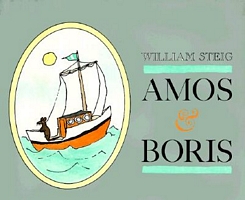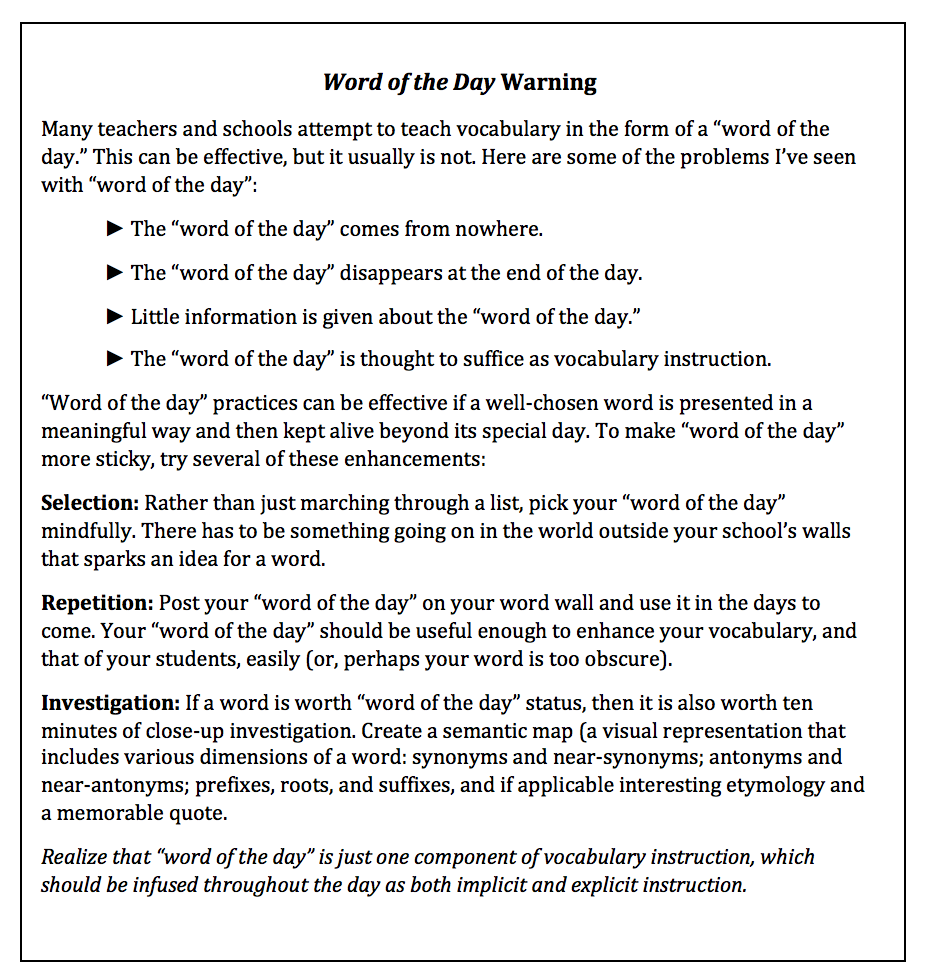5 Ways to Assure Quality Exposure to New Words
What’s one of the most important things an ordinary school day can offer? Exposure to newly learned words!
The best exposure – the kind that results in the most durable learning – is helpful in context. It’s well-timed, multisensory, and question-based. Here are some ways to help assure your students have quality exposure to words. And, near the end, a warning about depending on the Word of the Day as a sufficient strategy.
-
Translate
Layer your sentences to provide a built-in definition or example of words that you think students might not fully know. Such built-in translation forms comprehensible input.
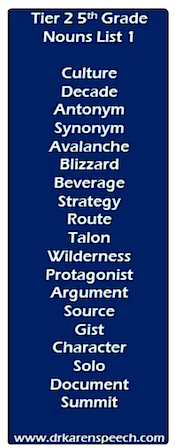
Another form of translation is rewording what students say to you. They speak to you in “Tier I language” – the common words of informal conversation. You feed their language back to them with a dash of Tier II – the more formal words of school, business, religion, and government.
A student says, “I lost my book.” You respond: “You misplaced it. Let’s retrace your steps. When was the last time you had it in your hands?”
-
Pre-visit, visit, revisit
Applying the principle of spaced retrieval, you can casually introduce targeted words weeks before you intend to spend quality time with them, planting the words in the mind’s peripheral vision. We’ll call that a “pre-visit,” which is a form of implicit instruction.
As you write mini-lessons, you might teach students that “one way writers draw their readers into the worlds of their stories is to write about a setting that creates a very specific climate for the reader.” In this way, not only are you attending to the pre-visit, visit, revisit model of vocabulary instruction, you are also setting children up to learn a word that can be used in many different grade-level contexts and forms.
After the word has been explicitly taught, make it a part of your classroom world. This is obvious, but when we isolate our vocabulary instruction, moving from one arbitrary list in a workbook to another, we may consider the necessity for continuous exposure unnecessary after the quiz has been taken, graded, and shelved. Don’t shelve those valuable new words!
-
Provide multisensory input
Keep in mind that learning is strongly reinforced when it comes through the senses and is animated through facial expressions, hand gestures, and gross motor activity.
Students who hear the words, say the words, quickly draw the words, find pictures that illustrate the words, act out the words, write the words, read the words, and even feel the words through tactile experiences decrease the likelihood of forgetting. A good, properly used word wall functions like a billboard, and companies pay for billboards for a reason.
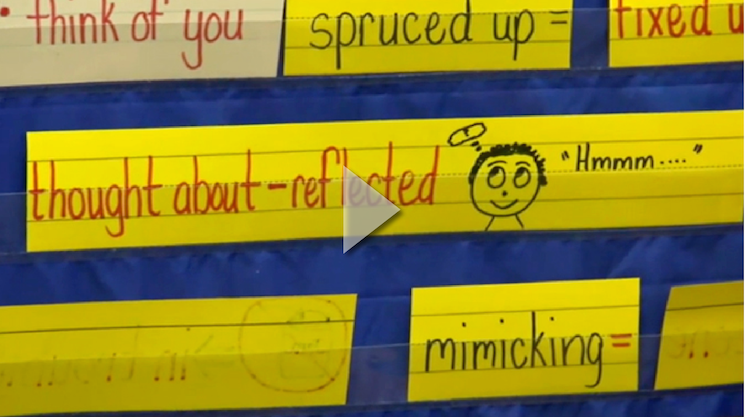
-
Use The Noticing Hypothesis
A metacognitive strategy that capitalizes on exposure is – simply enough – noticing words. We’ve all had the experience of hearing a new word or phrase, and then, oddly enough, we suddenly run into that word again and again.
“How did I get through life not knowing this word? Now I hear it all the time!”
One reason could be that we heard the word in the first place because it happens to be buzzing around in the environments we inhabit. But another reason is that our awareness of a word that was there all the time is now in the foreground of our consciousness because we just learned it.
Once you are aware of the existence of a word, you start paying attention to it, as if it had never crossed your path before, even though it probably did. There’s a name for this phenomenon. It’s called “The Noticing Hypothesis,” defined by Richard Schmidt, a professor of applied linguistics (1990, 2001).
The Noticing Hypothesis rests on the fact that lots and lots of stimuli bombard us. We cannot pay attention to all of it, thus lots of stimuli get ignored. The job of teachers (insert your prayer of choice here) is to focus our students’ attention – in this case, on words that they don’t yet know well.
The more students notice such words, the sooner those words can get on to their rightful business of being unnoticed (just part of the internal word inventory). Noticing the presence and forms of targeted words facilitates durable learning because noticing counts as a moment of exposure.
We can put The Noticing Hypothesis into service by asking students to notice the use of a handful of words on the Academic Word List (AWL) in their science, social studies, or math textbooks. (You will find them there in greater profusion than you would in a fictional story.) The words drawn from literature that you choose for explicit instruction should appear multiple times in the story for The Noticing Hypothesis to work well.
Your word walls may or not include definitions, contexts, or illustrations. The most important feature of a word wall is that it be clear to the eye. Avoid clutter. If you want to include definitions, contexts, or illustrations, have enough white space to allow for easy reading from any distance within the classroom.
It’s also important for students to put their new words in their hands as they write. Students across all grades can have personal word walls in their writing folders. These are, basically, lists of words that are high frequency for a particular child. If Joanna consistently writes about her life as a soccer player, her personal word wall might have words like, “goalkeeper,” “cleats,” and “penalty.”
Offer word banks as a pre-writing scaffold and again as a revision scaffold. When students are writing about literature, have them pull “special” words right out of the text, words that they can incorporate into their writing pieces. These words can be added onto their personal word walls, too.
-
Ask easy questions
Start with yes-no and this-or-that questions, and have students use the targeted word in their answers, even though it will sound redundant. This is a way to provide meaningful repetition.
Let’s say you are working with the picture book Amos & Boris by William Steig. This lovely book has a grade level equivalent of 3.7 (Scholastic.com) but works well with younger and older kids. It weaves sophisticated vocabulary with a simple, attractively illustrated story, making it comprehensible.
It’s a story about a mouse (Amos) and a whale (Boris). Here’s the text on page 5, describing the boat that Amos just built for the voyage that takes place in the story:
The Rodent, for that was the boat’s name, proved to be very well made and very well suited to the sea. And Amos, after one miserable day of seasickness, proved to be a natural sailor, very well suited to the ship.
He was enjoying the trip immensely. It was beautiful weather. Day and night he moved up and down, up and down, on waves as big as mountains, and he was full of wonder, full of enterprise, and full of love for life.”
Not long ago I read this book to first graders. The gist is easy for them to get, but, as you can see, many of the words are unfamiliar or used in unfamiliar ways. Our targeted word is immensely. (Teachers of older students can see the teaching patterns here and adapt them to their own circumstances.)
Yes-no and this-or-that questions:
- Put your hand up if you think the word immensely means that Amos was enjoying the trip a lot or a little?
- Put your hand up if you think the beautiful weather was part of the reason why Amos was enjoying the trip immensely?
- Put your hand up if you think immensely means big or small?
- Put your hand up if you think Amos is an immense creature?
Then there’s the way the word proved is used. Some younger students may know that proving something has to do with guaranteeing that it is true. Questions to broaden their understanding of this word in context might be these:
The boat proved to be very well made, and Amos proved to be a natural sailor. Do you think the trip proved to be enjoyable? Do you think Amos proved to be excited about this trip? Do you think it proved to be miserable weather?
We could do the same with the phrase well suited to. Both proved to be and well suited to may fly under our radar as we consider unknown vocabulary in text, but it’s important that we consider not just words alone, but words that may be used in unfamiliar ways.
The text says that Amos is full of enterprise. I would never expect first graders to know that word, but the context is helpful enough for them to be able to think through questions like whether “being full of enterprise” is good or bad, synonyms and antonyms for “enterprise,” etc.
I change the form of the words as I ask the questions. Part of the repeated exposure principle is that words need to be presented in various forms as well as contexts. Model the different usages!
 Exposure, exposure, exposure
Exposure, exposure, exposure
Experts in language acquisition agree that the critical factor in word-learning is repeated, substantive exposure, the kind of exposure that, collectively, gradually employs a word in its full range of meaning and grammatical forms.
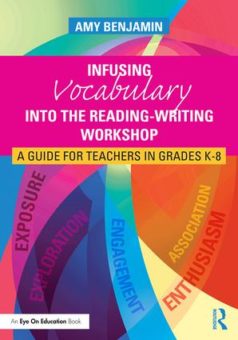
Amy’s latest book is Engaging Grammar: Practical Advice for Real Classrooms, 2nd Edition (NCTE, 2021).



